 |
 |
 |
 |
 |
 |
 |
 |
 |
 |
 |
 |
 |
 |
 |
 |
 |
|
 |
 |
 |
|
 |
 |
 |
|
 |
 |
 |
Grateful thanks to all those that have provided many of the articles, references and details in these pages
This is a non-profit site |
| |
| |
| |
| |
| |
| |
| |
|
 |
The location of the photographers and illustrators on the site of the Craig Telescope
There a number of images of the telescope which can be found on various pages within this site where they are described more fully. However, it is what can be seen in the foreground and background of the images that is discussed here.
|
 |
|
 |
 |
 |
| The Beard Engraving - 1851/2 |
 |
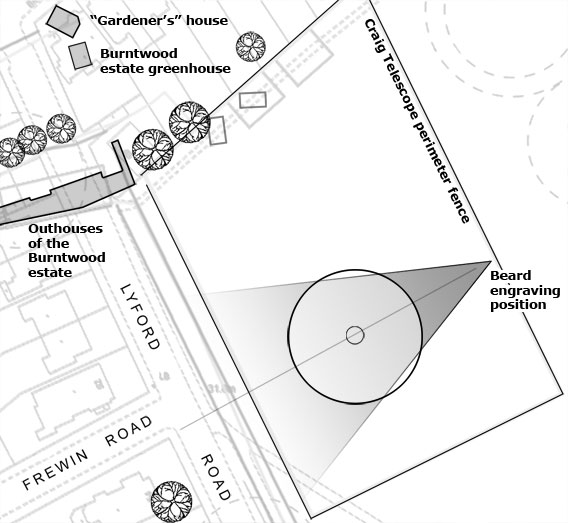 |
 |
Despite the obvious distortions in the engraving, the original daguerreotype must have been taken from the east looking west. The trees in the background are probably the same as those shown on the 1862 Burntwood House sales map. From here no outhouses nor the astronomers accommodation block can be seen.
courtesy Greg Smye-Rumsby
|
|
 |
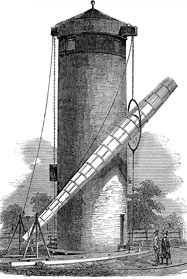 |
 |
Mouse over to enlarge>>
Possibly a very early example of image manipulation for this engraving was made from a daguerreotype taken by Richard Beard possibly just before the telescope was completed around 1851. The image has been adjusted to fit the column measure of the Illustrated London News.
courtesy Illustrated London News
See maps of the area through the years>>
|
|
 |
 |
| |
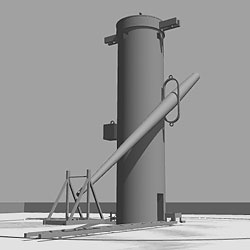 |
 |
 |
| |
A computer generated model which has been used to place the background objects within the site and beyond on a map to reveal what may be their true positions.
courtesy Greg Smye-Rumsby
|
 |
 |
Beard was possibly tipped off by his acquaintance, William Gravatt, since lived at the same address in Westminster.
Whilst Beard's
main income was that of portrait photographer at his studios in London, it would not have escaped his entrepreneurial business mind that he could make a little extra income in providing this image for the Illustrated London News. Remember this was an extremely big story at the time and had the potential of being a world beater within the scientific community.
More on Richard Beard>>
back to top of page >>
|
 |
|
 |
 |
 |
| The Sargent Painting 1852 |
 |
|
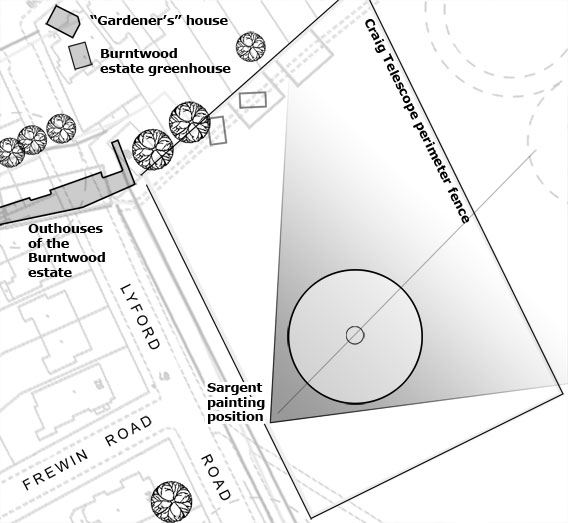 |
 |
This image bears up well to scrutiny. There are virtually no man made interruptions to the skyline apart from the telescope in the foreground. Seen just to the right of the tower is Jame's Industrial School.
From this vantage, Sargent did not capture any other buildings on the observatory site as they were not within his field of view.
courtesy Greg Smye-Rumsby
|
|
 |
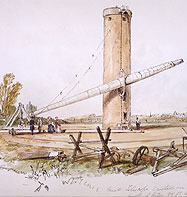 |
 |
Mouse over to enlarge>>
Sargent has helped much in our understanding of how the telescope was constructed and given hints as to how it may have operated.
courtesy City of London, Wakefiled Collection
See maps of the area through the years>>
|
|
 |
 |
| |
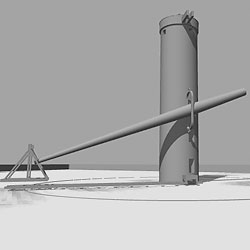 |
 |
 |
| |
A computer generated model which has been used to place the background objects within the site and beyond on a map to reveal what may be their true positions.
courtesy Greg Smye-Rumsby |
 |
 |
This beautiful rendition of the telescope shows it shortly after it was 'commissioned'. There are several people shown and these may be John Craig, William Gravatt and two ladies.
In the foreground there are the remains of failed attempts to construct parts of the dolly and the azimuth arm, showing clearly that much of the instrument was built on the fly so to speak.
back to top of page >> |
 |
|
 |
 |
 |
| The Diamond Photograph 1853 |
 |
|
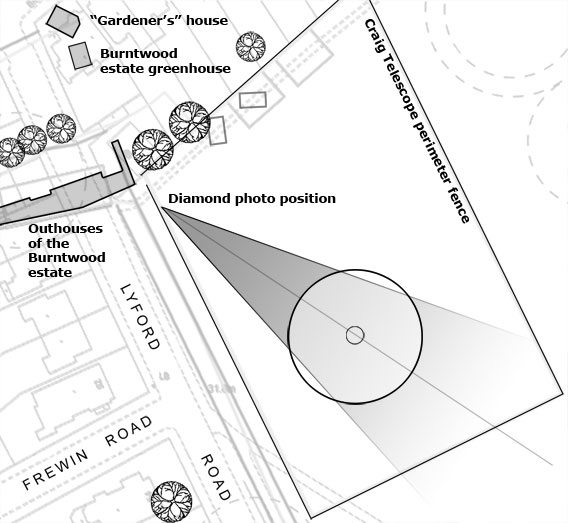 |
 |
Like Sargent, Dr Hugh Diamond undertook his photographic study of the telescope from the north west. In the distance Jame's Industrial School can easily be seen.
courtesy Greg Smye-Rumsby
|
|
 |
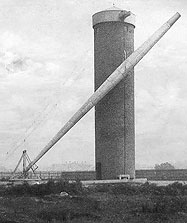 |
 |
Mouse over to enlarge>>
A telescope in perfect condition. This image was captured shortly after the telescope was completed. The telescope shows no signs of rust. This is also the only image that clearly shows the finder scope and the workings of the dolly.
courtesy David Hulse Associates
See maps of the area through the years>>
|
|
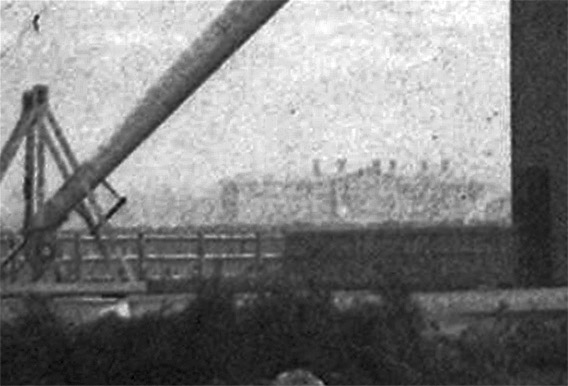 |
 |
Just seen in the distant haze is James Westminster Industrial School. This helps line up the position of the photographe. The Parish of St. James, Westminster was granted 20
acres of land for the industrial school by the Lord of the Manor (Earl Spencer) around 1850.
|
|
 |
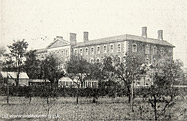 |
 |
James Westminster Industrial School.
 |
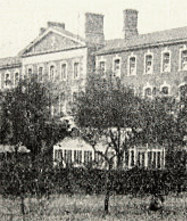 |
 |
The distinct shape of the chimney stacks and the triangular facade is obvious.

|
|
 |
 |
| |
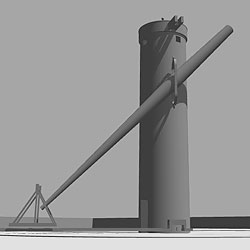 |
 |
 |
| |
A computer generated model which has been used to place the background objects within the site and beyond on a map to reveal what may be their true positions.
courtesy Greg Smye-Rumsby |
 |
 |
Dr Hugh Diamond worked in the asylum only short way to the north of the Craig Telescope. He was a keen 'amateur' photographer and had obviously decided to capture the telescopes image. This picture reveals a great deal about the scope including the bogey which was designed to gather the trailing chain slung from the underside of the hoop and the dolly with its workings Also shown is the lens cap.
back to top of page >> |
 |
|
 |
 |
 |
| The Bevington Photograph 1855 |
 |
|
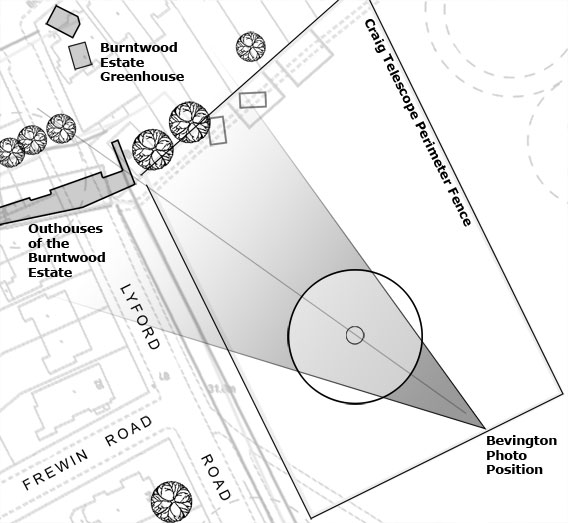 |
 |
The north west corner of the site looking from the south east. The telescope is seen directly ahead. This wide angle image looks along the trackway on the left which runs along the north edge of the site. The fence on the extreme left of the photograph lies exactly where the telescope’s perimeter fence would have stood. On the right is Lyford Road running southwards away from us. The path and Lyford Road are 90° apart.
courtesy Greg Smye-Rumsby
|
|
 |
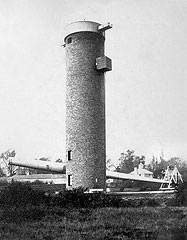 |
 |
Mouse over to enlarge>>
The Bevington photograph is by far the clearest of all the images, revealing much of the landscape at that time. In the back ground are many trees and buildings. These can easily be checked against the Sales plan of the Burntwood Estate. The location of the Astronomers Block is still very unclear because important detail is obscured by shrubbery and the telescope's tube.
courtesy Greg Smye-Rumsby
See maps of the area through the years>>
|
|
 |
 |
| |
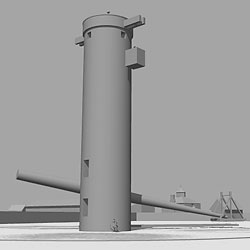 |
 |
 |
| |
A computer generated model which has been used to place the background objects within the site and beyond on a map to reveal what may be their true positions.
courtesy Greg Smye-Rumsby |
 |
 |
Geoffrey Bevington saw an opportunity to record the instrument before it was dismantled. He must have realised that its days were numbered. It looked abandoned and it had probably not been used for months judging by the state of the site and the telescope itself. It was probable that the lens had already been removed along with the protective lens cap.
Living only a short distance away, he may have taken advantage of the fact that the site was unattended. It is also possible he had to get all his equipment over the perimeter fence, which would not have been an easy task.
Looking at the telescope's tube position and that of the counterweight and winch it is clear that the site has been left unutilised for some considerable time.
back to top of page >> |
 |
|
|

